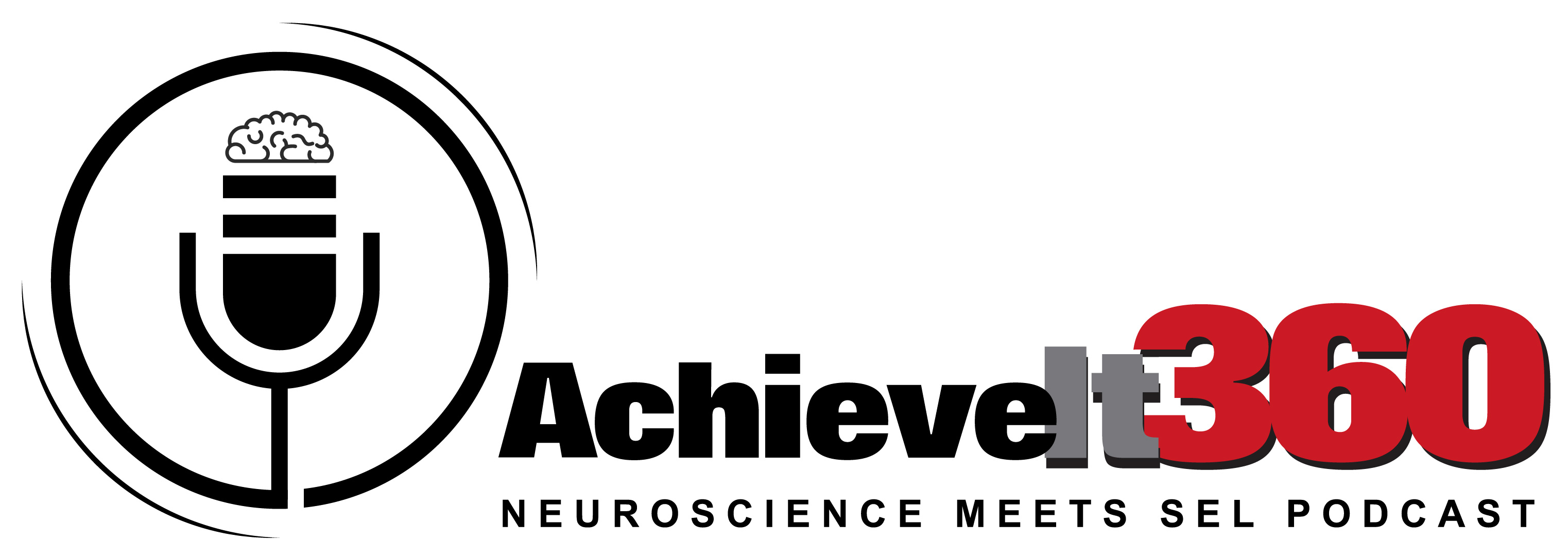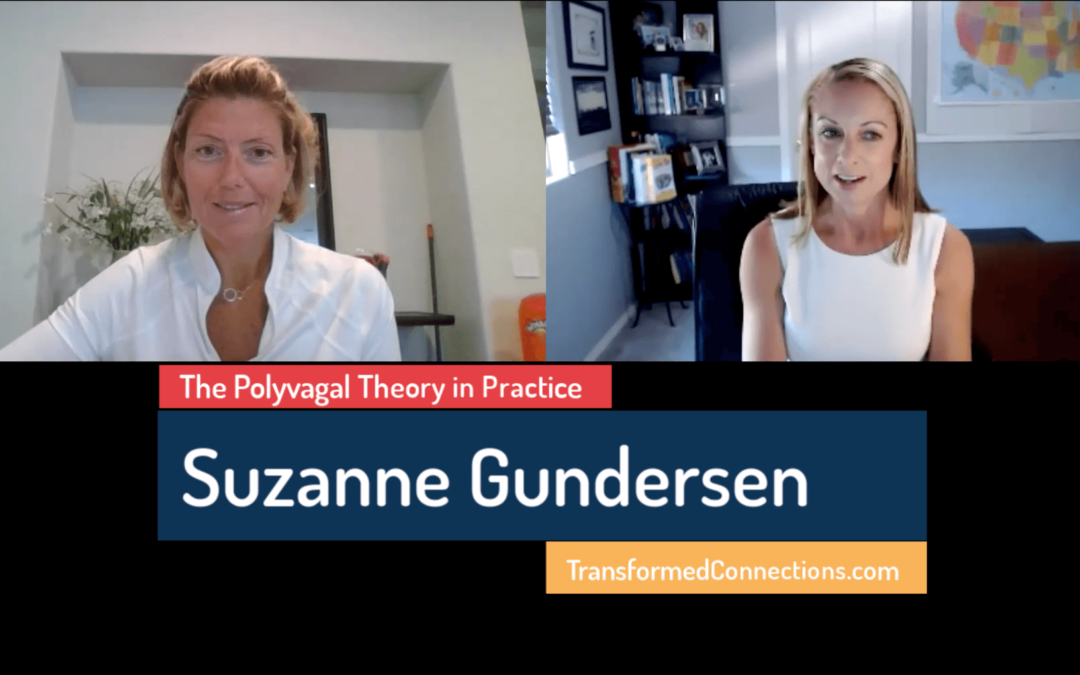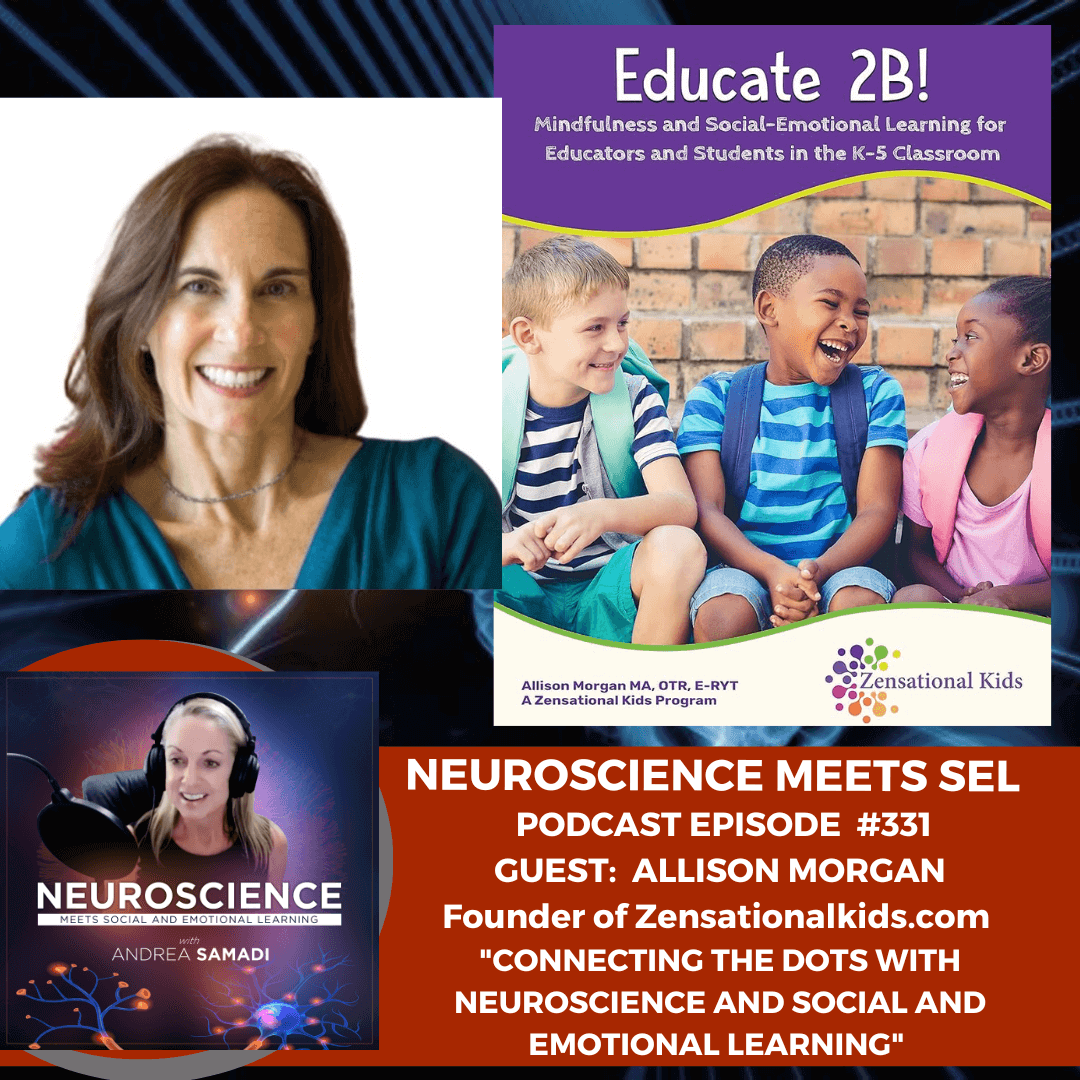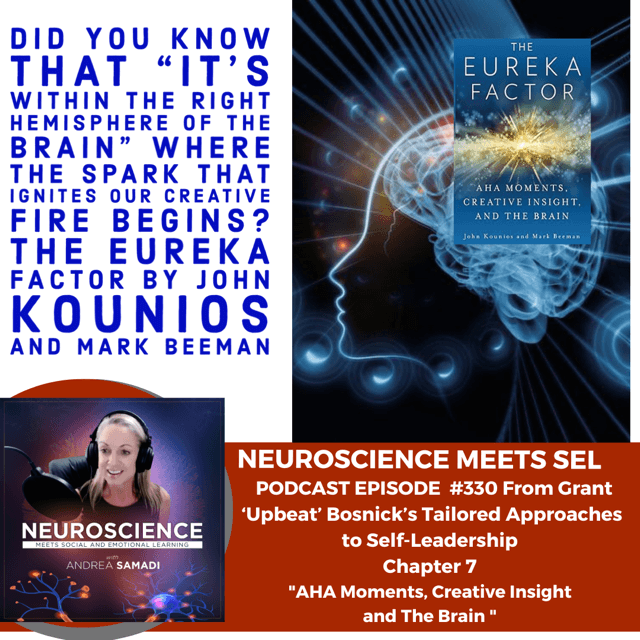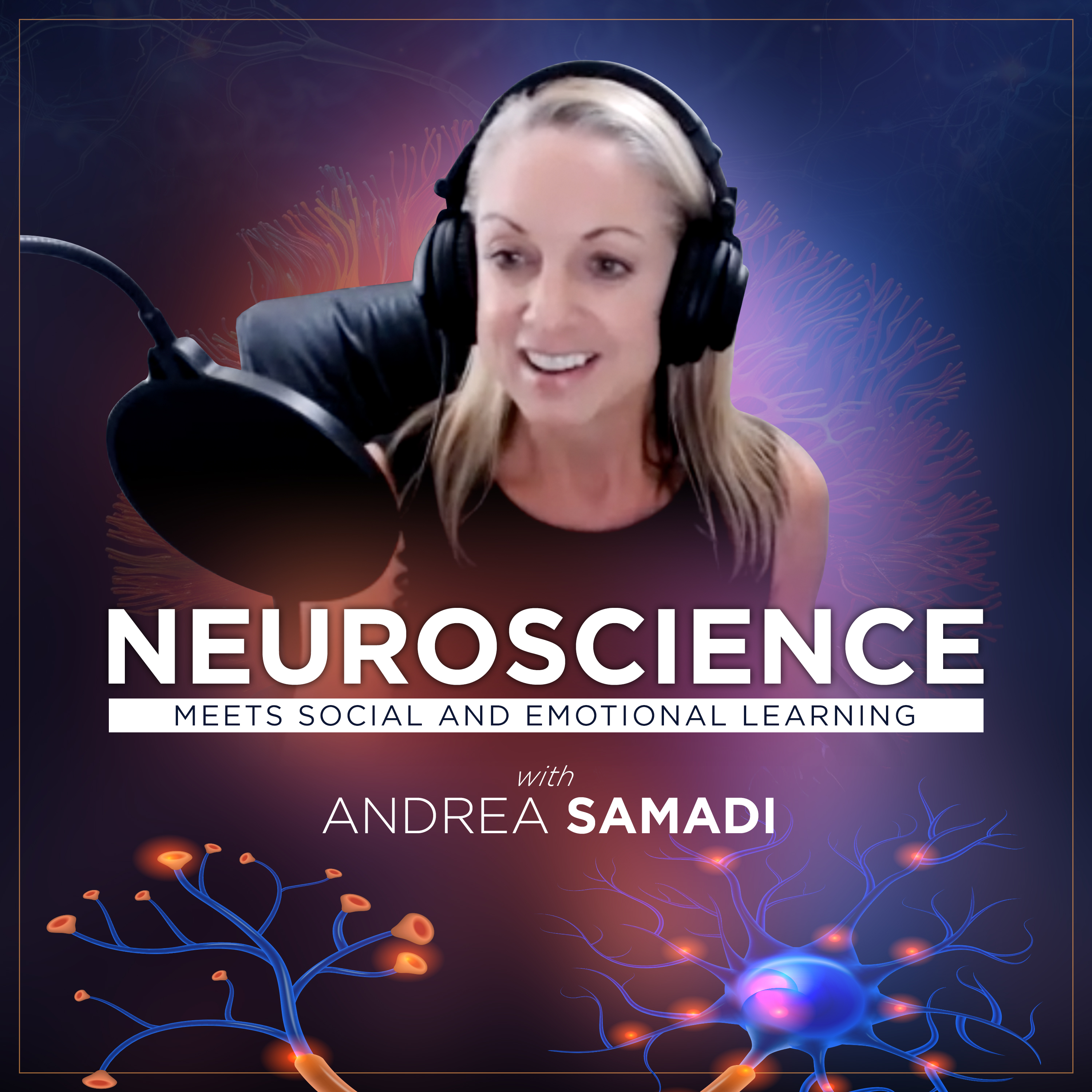This is episode #59 with Suzanne Gundersen. You can watch the interview with graphics here on YouTube.
Thanks for tuning into the podcast today! I’m always excited about the guests we bring on here, as each person has achieved high levels of success in their field and I know they can help others by sharing their knowledge. Our next guest is an expert in a topic that has been on my reading list the past year. When I was speaking with Suzanne Gundersen and she mentioned her life’s work has been based on putting Dr. Stephen Porges’[i], Polyvagal Theory into practice, I stopped what I was doing and asked if she could tell me more about this.
For the past year, I’ve been watching trainings from Deb Dana[ii] (whose mentor was Dr. Porges) and just bought her book The Polyvagal Theory in Therapy[iii] and had written down that I wanted to interview an expert on the Polyvagal Theory. Plus, I have heard Dr. Lori Desautels mention Dr. Porges’ work the past year, and so I wasn’t surprised when an expert showed up. If you are new this work, like me, you would know why I would be looking for an expert to explain this theory. Someone who could in simple terms explain what we must all understand about our Central Nervous System when it comes to managing our stress response. These days this understanding is more important than ever before and this is exactly what Suzanne does with two tracks, first is stress education (the science of stress) and secondly, she speaks about nervous system with regulation techniques.
Welcome Suzanne, thank you so much for coming on the podcast today to share your knowledge, and programs on such an important topic. Like we spoke about, there are many layers to this theory, and at first glance of all the notes I have taken on it, I still can’t explain it very well. Thanks for helping us break down this theory so we can think about how it can apply for our teachers in the classroom, for us as parents working from home, as well as for those who want to apply this idea in the workplace.
Q1: What is “Polyvagal?” and why is this theory so important for us to understand these days? Answer is that it’s the science of safety and connection, a map for living our most modern survival strategy, social engagement. Porges theory shows how our evolution has delivered us to human form where our unique communication abilities offers us possibilities for secure and deeply meaningful connections to survive and thrive.
Q2: I actually have 2 version of the polyvagal chart (one you sent to me) and what we must know to remap our nervous system as dysregulation occurs. I got the first chart from Dr. Lori Desautels last October when I attended one of her live trainings. Can you give an overview of the Polyvagal chart and what’s happening at each level with the Ventral Vegal (safety), Sympathetic (danger) and Dorsal Vegal (Life Threat) stages so we can recognize these stages in ourselves and others?
Crash course on neuroscience three branches most modern VV, then SNS, then PNS, and in order to understand it we have to go way back to when we were fish, strategy to freeze, then amphibians with legs to fight/flight, then humans to communicate. We automatically respond to stress, hierarchically, start with most modern first then use more ancient strategies to keep us alive. When we sense threat, our first reaction is to is to look to another for safe connection to help us know we are safe, we look for facial cues, tone of voice, regulated heart beat, if we don’t receive what we need to know safety and connection, we revert to SNS (mobilization), if doesn’t satisfy, then to PNS freeze. Each stage has a co-relating stress symptoms and body system status (SNS- charged system- increase heart, breath, blood to limbs), SNS- systems release/go limp (drop bowls).
Q3: We have been talking on past episodes on the responsibility we have as parents and professionals to keep ourselves regulated (or in the green zone of your chart) but how do we do this? What are some suggestions/strategies that you offer when day to day stress hits us—strategies we could do at work, home or in the classroom? – get ourselves regulated, to be able to offer /hold presence space for children to be in their moment. Vagal toning…. Quick inhale/long exhale, hold breath, hum, ommm, squeeze/release, shake and twist body, pound thymus, drum.== what really doing is restoring natural rhythm to vagus nerve. When we’re stressed ,it’s like a hiccup to the body systems, these techniques restore rhythm.
Q4: I heard the term “neuroception” from Stefanie Faye[iv], who did EPISODE #39 with us on “Using Neuroscience to Improve Mindset, Self-Regulation and Self-Awareness.” She explained this term means that we must get better at sensing what’s happening in the body, the environment and between two people in relationship with each other. Can you explain how neuroception can help us to understand ourselves and others better with the polyvagal theory in mind?
Neuroception is a word Porges made up to deepen the word ‘perception’ to include more of an intuitive sensing component to it. Our ANS responds automatically and if responded through perception could infer a mental awareness, when our response is faster than our mind. So, neuroception is about our intuitive sensing of our surroundings so we know if we need to react to threat or if we can be immobile without fear. To understand this let’s chat about animals. Animals attack each other for food or control. As humans, we too are animals and while some humans fight each other for blood our dominant evolution is to connect. Neuroception helps us know/intuit who is safe to connect and be immobile without fear. And that if we’re threatened, to use language to communicate to resolve threat. It’s our evolution potential ,however you can imagine we’re still working on it.
Q5: What are some of the healing modalities that you have seen used to help with stress relief? Top down (talk therapy) vs bottom up (integrating the mind and body). What popular strategies are you seeing today?
Traditionally we’ve been so focused on the mind, talk therapy, mindset work, as the western way of managing stress. While that top down approaches are still valid, so many are opening up to whole mind/body solutions.
Let’s visual a brain…. Stem – instinct (body) , then limbic- memory, emotions then pre-frontal cortext – thinking mind. Top down would be to start with the pre-frontal cortex, like CBT, Talk Therapy, Mindfulness, Mindset, Hypnosis, Meditation. Bottom up would be to start with the body/NS patterns – TRE, myofascial release, yoga, breath work, SE. Then there are some that meet in the Limbic middle, Tapping, EMDR. Every modality works, however some need to start with more body work / brain stem & NS to be regulated enough to relate within the limbic system and then rationally access the reasoning of the pre-frontal cortex thinking mind. This is why some people can’t meditate, they just aren’t regulated enough to sit with their dysregulated systems and distracting emotional habits to be present and calm.
STORY: When I was preparing my questions for you, I did see that you mention Energy Tapping as one of your bottom up models for stress reduction. I have to tell a quick story, because I learned energy tapping back in 2001 when I met a doctor from Singapore (Dr Joseph Guan)[v] who came to the US and was doing some teaching on what they were doing Internationally. Of course, I attended his seminar, and learned all about the meridian points, and how it worked, and began using it right away–mostly to build up my resilience and mental strength. This doctor was well-known, respected and at the time was working with Dr. Bruce Lipton[vi], an American developmental biologist who is well-known in this field today. So here’s my story-back when I worked in the corporate world, in educational publishing, a sales manager heard about energy tapping from a TV show and she approached me to see what I thought. She wanted to know “Did I know what it was, could this concept help the sales team, was I using this idea myself, and could I present this idea to the sales team in our next weekly meeting?” All of the answers were yes. Of course, if there was a strange, new productivity strategy, people would ask me first if I had heard about it.
So, here I am, in the front of my sales team (a mix of males and females) and introducing the success strategy of the week as energy tapping, and I will never forget the look on their faces. They seriously were not ready for a strategy like this. I knew they all thought I was crazy, and they did. It really didn’t matter if the strategy was making the news, would improve their results in sales and increase the company’s revenue, the sales team wouldn’t do it. That was definitely one of many ideas that I tried to introduce to the corporate world that I would say I was ahead of the time for. How have things changed as you see it? How does the Corporate World now embrace these new stress reduction modalities like energy tapping? I know this modality has received criticism and some people have felt it lacked scientific evidence, but there are clearly many studies now showing its effectiveness[vii].
Great story, I can relate. When I started sharing Tapping with others around that time, they thought I was crazy, however I think the collective consciousness is waking up, physically, emotionally and mentally and realizing they want to move from coping to thriving which is opening the door more and more to tapping. More common these days for companies to have wellness programs that include mindbody programs full of yoga, breathwork/meditation. Tapping is slowly making its way in the US, thanks to Ortner’s great marketing work on the technique however many still don’t understand it or how to easily put it to use. My ACE system solves that problem and I’ve been sharing it with my corporate peers who are open minded and willing.
Q6: Can you provide some other example of bottom up models for stress relief?
There are many traditional and holistic modalities out there and they all work, the question is to find what will work for you. I like to start with the body because it makes sense in terms of the brain’s evolution. Massage, Yoga, Vagal Toning exercises or practitioner led TRE, SE to discharge the tension and overwhelm. It’s not a one size fits all, but start trying them and see what fits and once you found it, work it with persistency.
Q7: Is there anything else that you think is important that we might have missed?
We’re living in very transformative times, with the world as we know it dismantling in front of us, threatening our ‘normal’ lives. That threat has us living in stress, which is to live in survival energy. The evolution of our mind has taken it away from the body and we are dis-integrated. Our integrated evolution has been stunted and why the Earth has hit a reset button for us to come back to the body, back to basics. We need to retrain our nervous system from the value we put on busyness to the value of restoration. We have a huge opportunity now to deeply connect within to know ourselves and share that authentic version with the village we choose to surround ourselves, that makes us feel safe and that we belong, for who we truly are. Polyvagal Theory helps us understand our evolution and our potential for living with genuine aliveness.
RESOURCES:
If someone wants to learn more about Suzanne’s programs and services, go to www.transformedconnections.com to learn more and gain access to a FREE 30 minute consultation.
REFERENCES:
[i] https://www.stephenporges.com/
[ii] Deb Dana https://www.rhythmofregulation.com/
[iii] The Polyvagal Theory in Therapy by Deb Dana Foreword by Stephen Porges (Norton and Company, 2018) https://www.amazon.com/Polyvagal-Theory-Therapy-Interpersonal-Neurobiology/dp/0393712370/ref=tmm_hrd_swatch_0?_encoding=UTF8&qid=1585756602&sr=1-2
[iv] Neuroscience Meets SEL Podcast EPISODE #39 with Stefanie Faye on “Using Neuroscience to Improve Mindset, Self-Regulation and Self-Awareness” https://andreasamadi.podbean.com/e/neuroscience-researcher-stefanie-faye-on-using-neuroscience-to-improve-our-mindset-self-regulation-and-self-awareness/
[v] https://www.linkedin.com/in/dr-joseph-guan-5156a23/
[vi] https://www.brucelipton.com/
[vii] https://www.thetappingsolution.com/science-research/
Podcast: Play in new window | Download
Subscribe: Apple Podcasts | RSS
